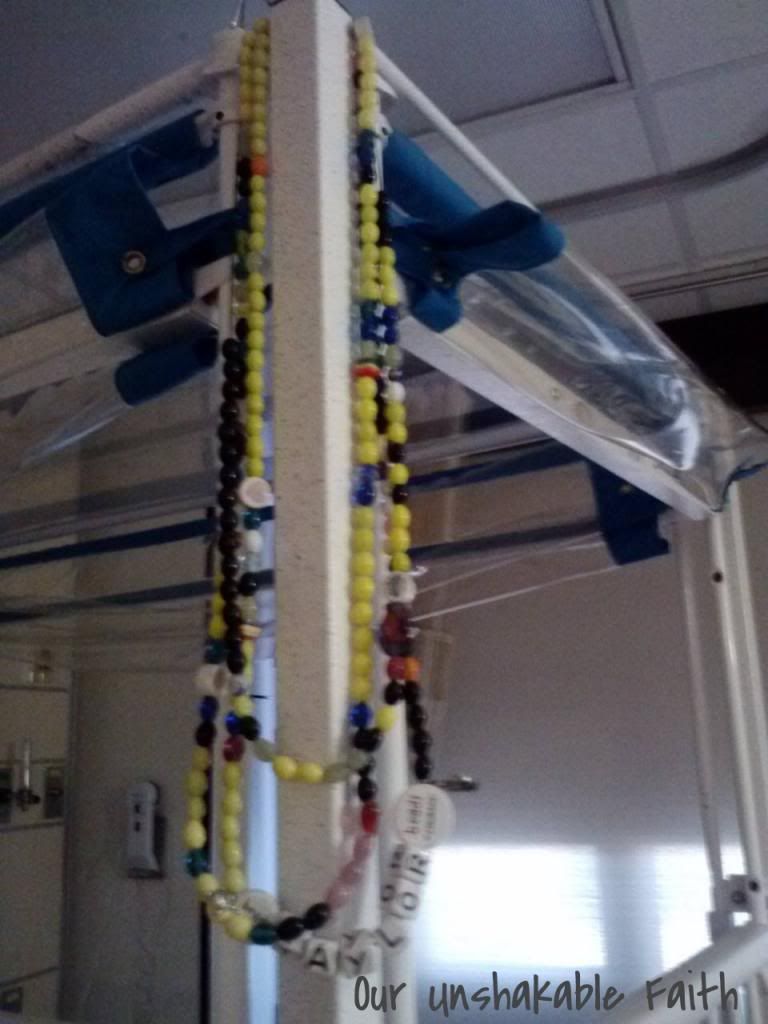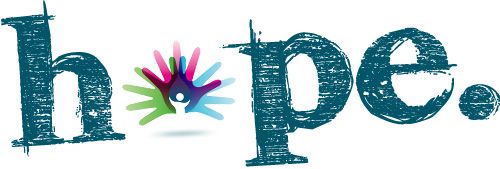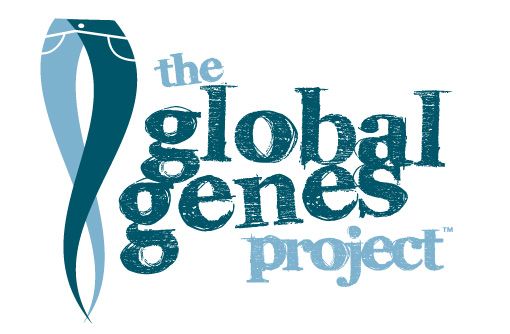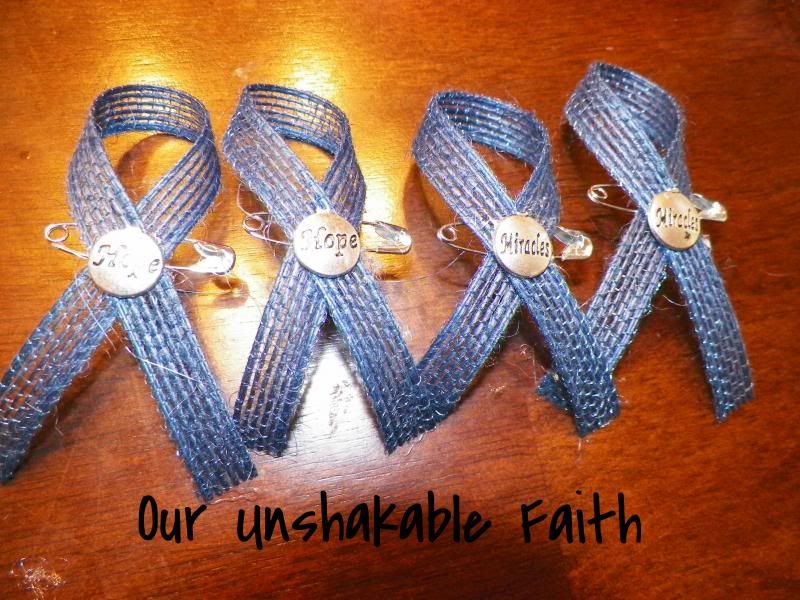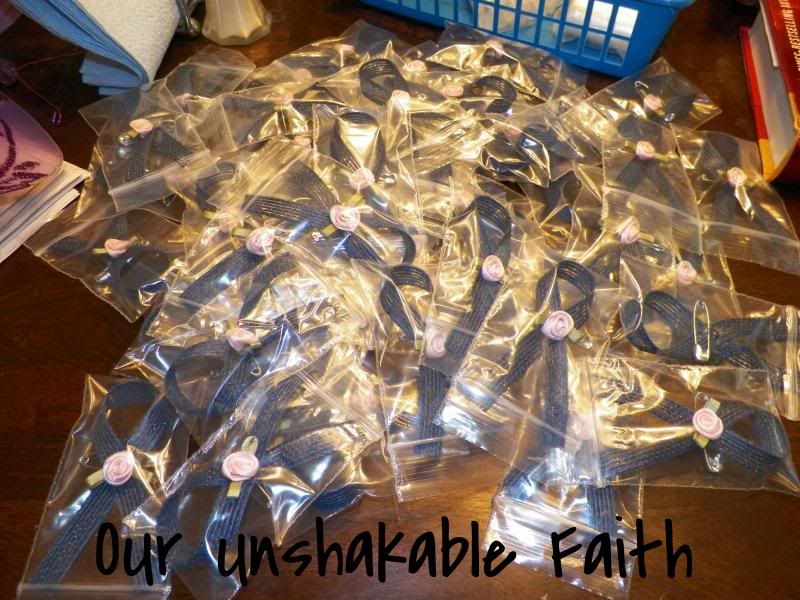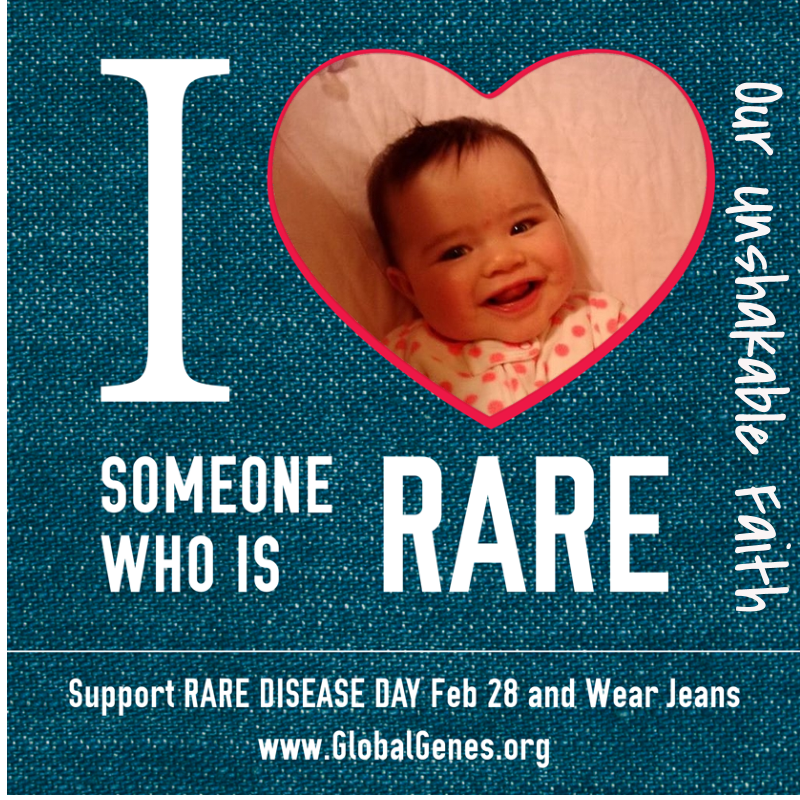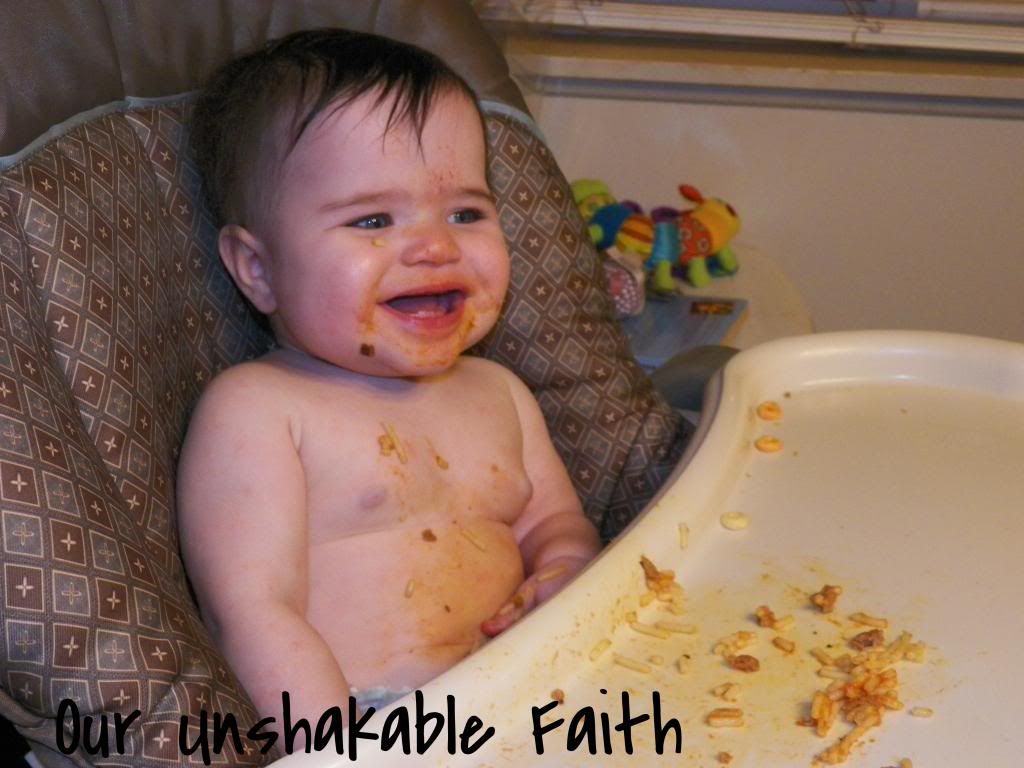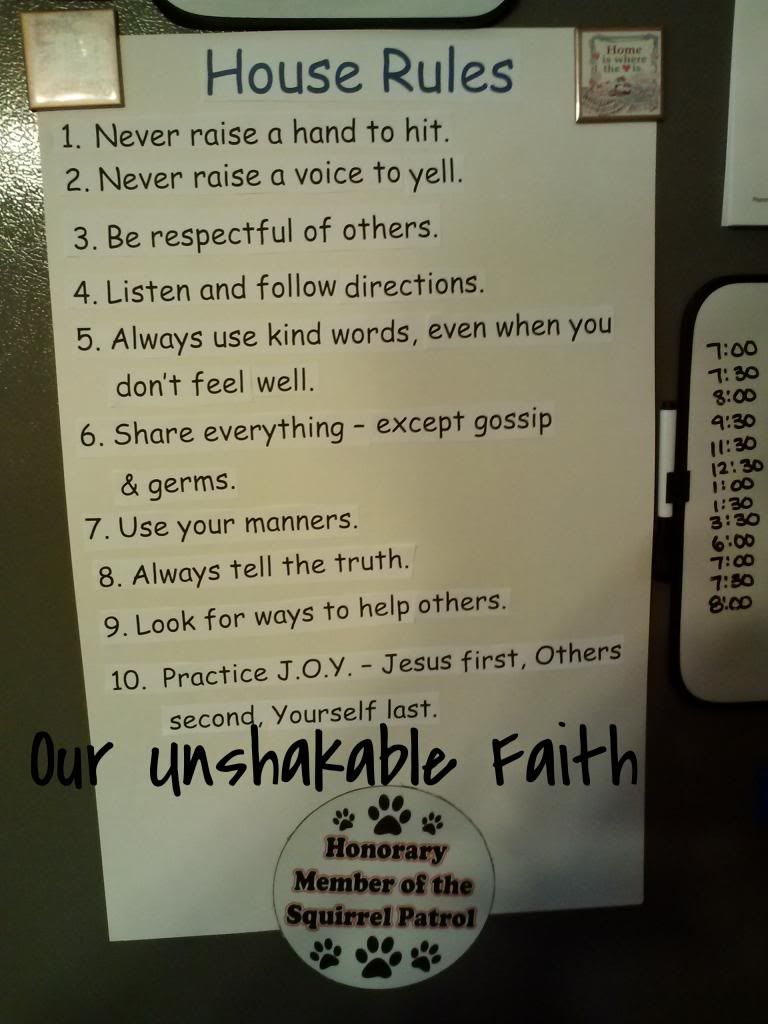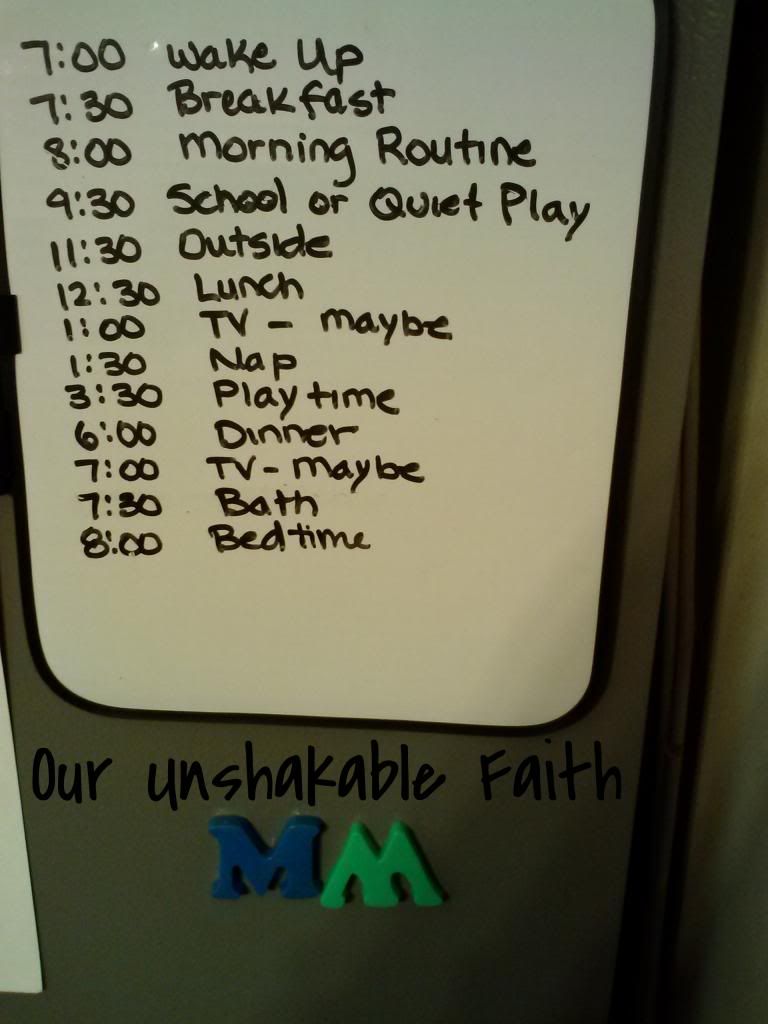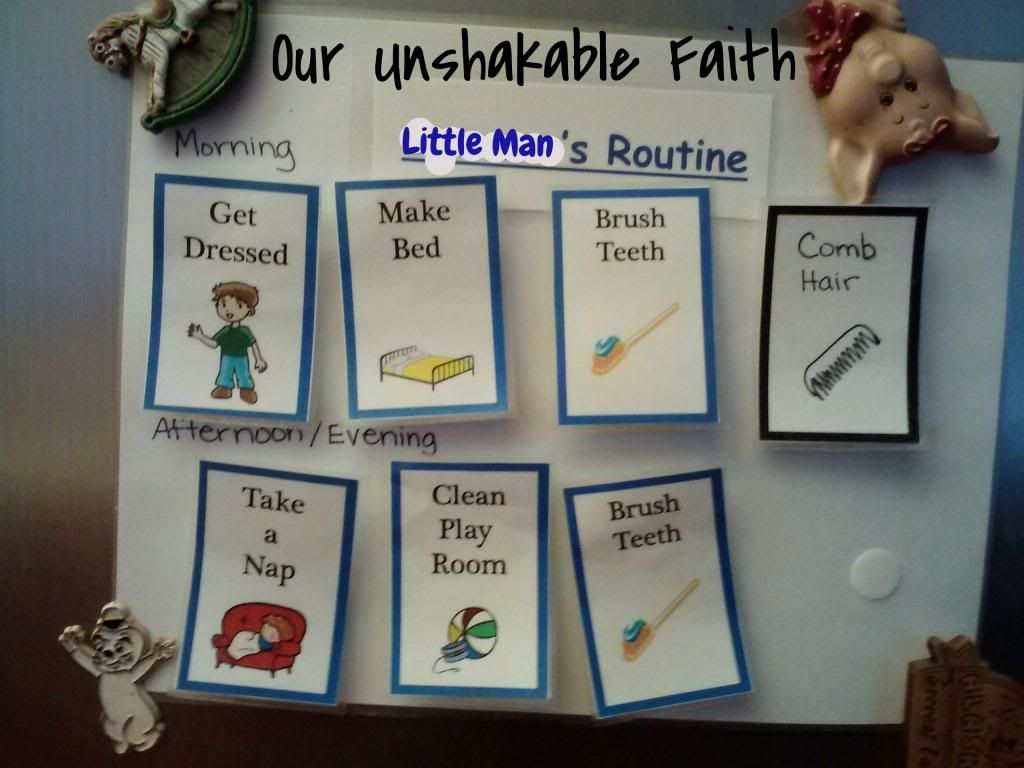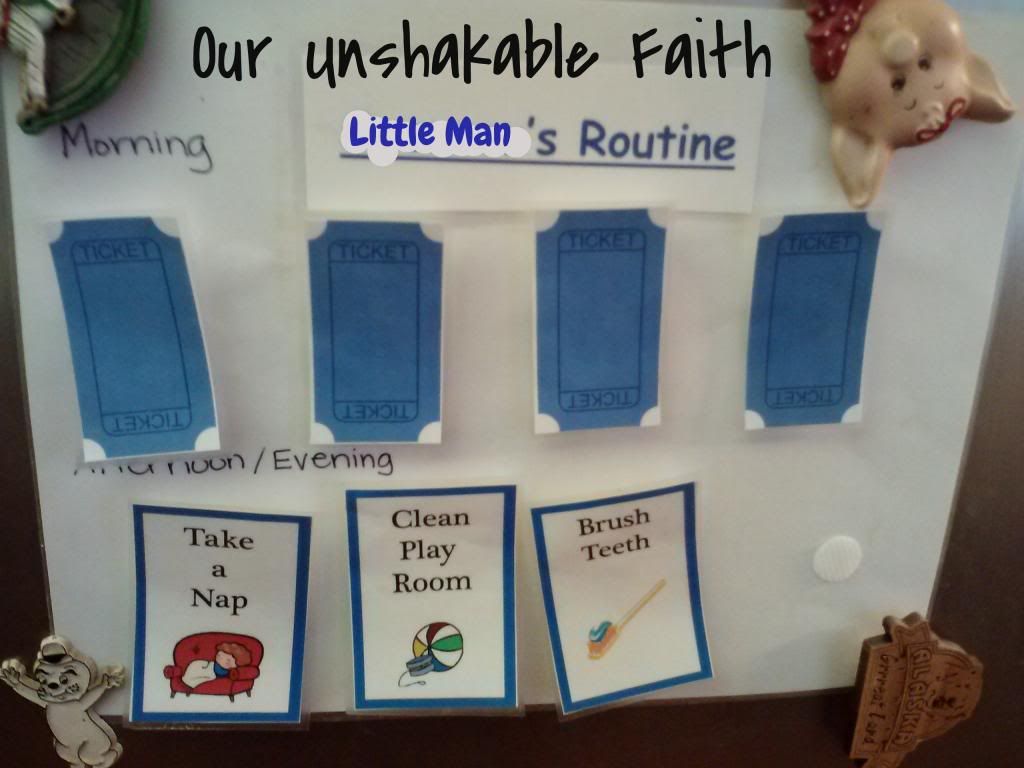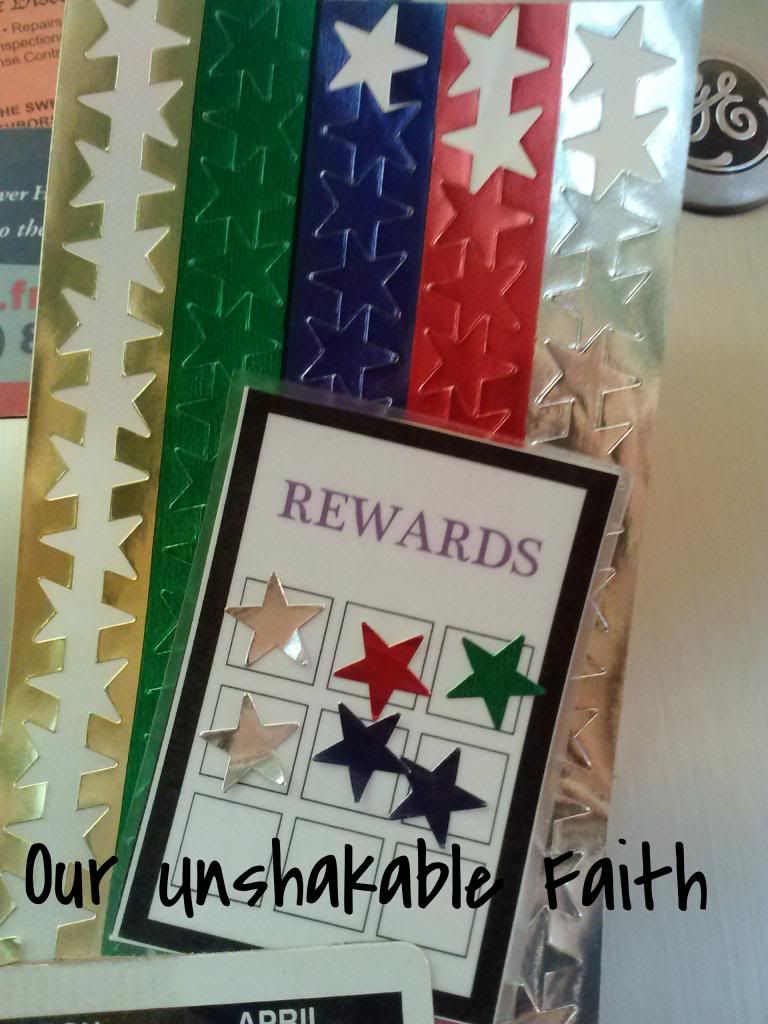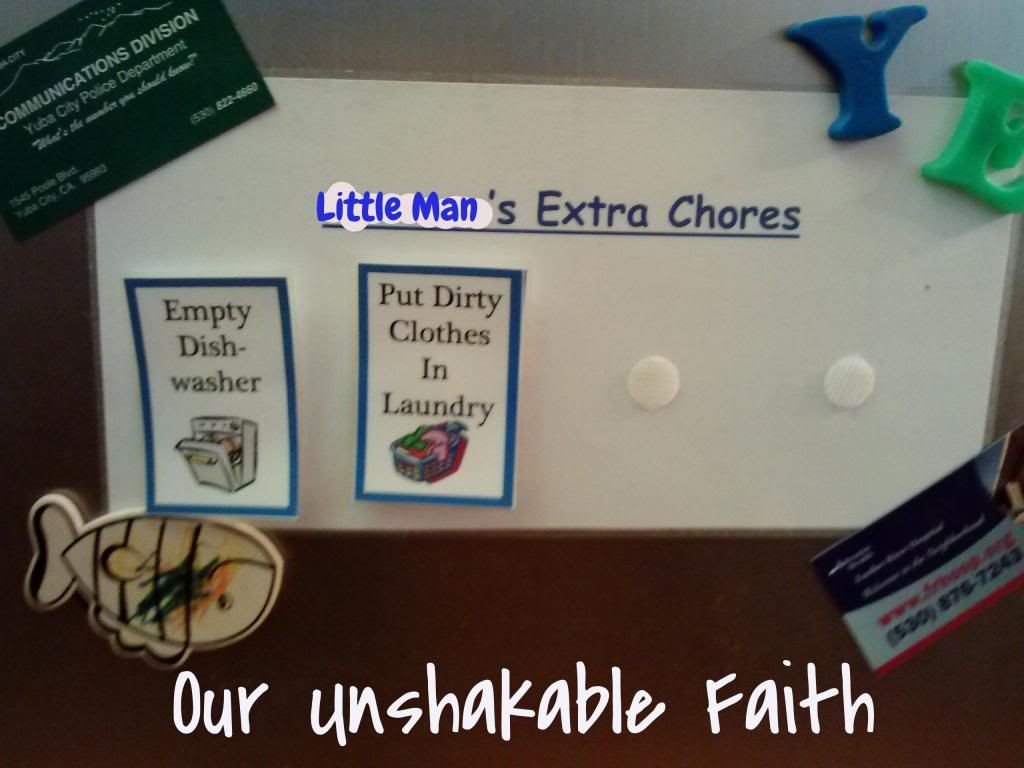Her rare disease is Pseudohypoaldosteronism Type 2 (PHA2). In short, it's a genetic disease that affects the way her kidneys process potassium. Potassium is essential for the function of the heart, kidneys, muscles, nerves and digestive system. You primarily get potassium in food. If you have too much potassium, it could cause an arrhythmia and could be fatal. Your kidneys work to balance the potassium level among other things.
So how did we go from simply having a premature baby to a child with a rare disease?
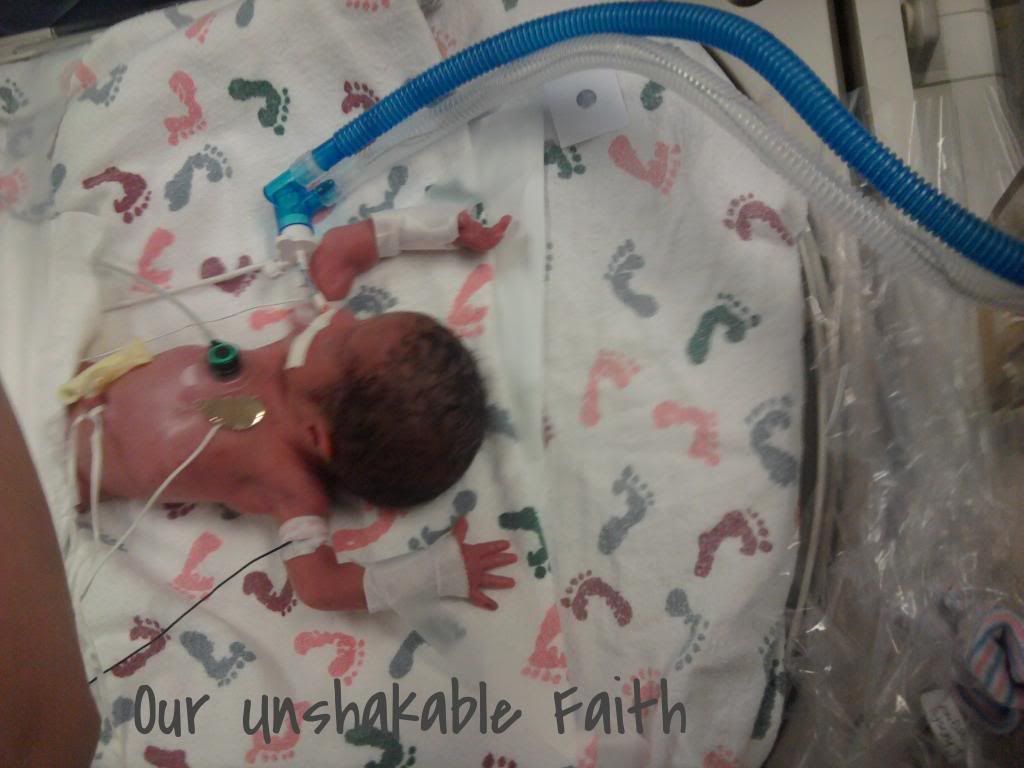 Well, back when Princess was only 3 weeks old, she became anemic and also had her first bout with metabolic acidosis. Her blood's pH level was acidic. Blood pH is usually alkaline between 7.35 and 7.45. I don't know what Princess's levels were, but her electrolytes were obviously out of whack. Her neonatologist at the time said that it could be the fortifier they were using, as he had seen this happen to other babies there. We were primarily concerned about the anemia at that time, as there was the possibility of a blood transfusion. So, after another week on bubble C-PAP, Princess was back in the intermediate room and progressing. Her electrolytes had stabilized and things were fine. Then one of her nurses noticed that she seemed to be hypertensive. So the neonatologist ordered an echo cardiogram and a renal ultrasound. He wanted to rule out anything wrong with the heart and anything wrong with the kidneys. Physically, both organs were fine. So the cardiologist there on the floor ordered that her blood pressure be taken when she was asleep in her right arm. (Usually they take it in the leg for babies.) Well, after doing that, he seemed happy with the results he was getting. They were more in the normal range. He attributed it to the stress of the NICU. When we were discharged, we didn't have a cardiologist follow up.
Well, back when Princess was only 3 weeks old, she became anemic and also had her first bout with metabolic acidosis. Her blood's pH level was acidic. Blood pH is usually alkaline between 7.35 and 7.45. I don't know what Princess's levels were, but her electrolytes were obviously out of whack. Her neonatologist at the time said that it could be the fortifier they were using, as he had seen this happen to other babies there. We were primarily concerned about the anemia at that time, as there was the possibility of a blood transfusion. So, after another week on bubble C-PAP, Princess was back in the intermediate room and progressing. Her electrolytes had stabilized and things were fine. Then one of her nurses noticed that she seemed to be hypertensive. So the neonatologist ordered an echo cardiogram and a renal ultrasound. He wanted to rule out anything wrong with the heart and anything wrong with the kidneys. Physically, both organs were fine. So the cardiologist there on the floor ordered that her blood pressure be taken when she was asleep in her right arm. (Usually they take it in the leg for babies.) Well, after doing that, he seemed happy with the results he was getting. They were more in the normal range. He attributed it to the stress of the NICU. When we were discharged, we didn't have a cardiologist follow up.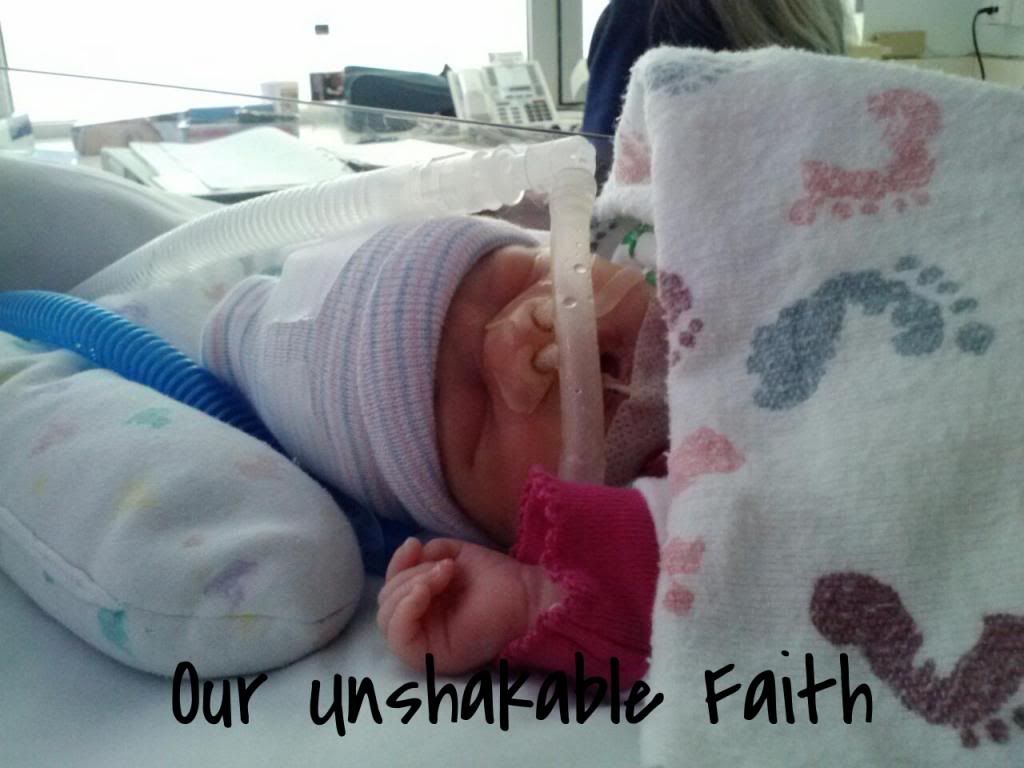 When we met with the pediatrician, and I told her that Princess was hypertensive in the NICU, she referred us to a pediatric cardiologist. She just wanted to make sure her blood pressure had truly stabilized, as she didn't have a cuff that small to check herself. So, about two weeks after we were discharged from the hospital, we were in Dr. K's office for another echo and then back later that afternoon for our appointment. At that appointment, he told me that she had cardiomyopathy (thickening of the heart wall) and he hadn't seen it in a child that young. So he was going to talk to some colleagues of his and go from there. He also didn't like the blood pressure at all. Two days after that, we were called back to his office. We were there from about 1:30 in the afternoon until about 5p. In that time, we did another echo, another renal ultrasound, more blood pressures and lab work. When we left his office, we were told to go over to the hospital for a repeat blood draw. Dr. K wanted to make sure that the lab outside his office hadn't messed up. So we did that. By the
When we met with the pediatrician, and I told her that Princess was hypertensive in the NICU, she referred us to a pediatric cardiologist. She just wanted to make sure her blood pressure had truly stabilized, as she didn't have a cuff that small to check herself. So, about two weeks after we were discharged from the hospital, we were in Dr. K's office for another echo and then back later that afternoon for our appointment. At that appointment, he told me that she had cardiomyopathy (thickening of the heart wall) and he hadn't seen it in a child that young. So he was going to talk to some colleagues of his and go from there. He also didn't like the blood pressure at all. Two days after that, we were called back to his office. We were there from about 1:30 in the afternoon until about 5p. In that time, we did another echo, another renal ultrasound, more blood pressures and lab work. When we left his office, we were told to go over to the hospital for a repeat blood draw. Dr. K wanted to make sure that the lab outside his office hadn't messed up. So we did that. By the time we got home, it was almost 6:30p. Two hours later, Dr. K was calling me saying that he wanted Princess admitted to the hospital. He'd already called. They had a bed ready, we just had to get there. So I packed a few things, and we were off to the hospital again, two weeks after being sent home. This time, Princess was in the PICU. Dr. F met us there. He had admitted Princess the week before with GI bleeding that was the last of the milk protein allergy. He told me that usually high potassium was a lab screw up. They need to get a serum potassium level, but if the blood cells burst, they release more potassium into the blood serum. But he agreed to chase the potassium level. Dr. K also wanted to start her on medication so Dr. F was on board with that being started in the hospital because they needed to monitor Princess's blood sugar levels. So that meant heel sticks after every bottle!
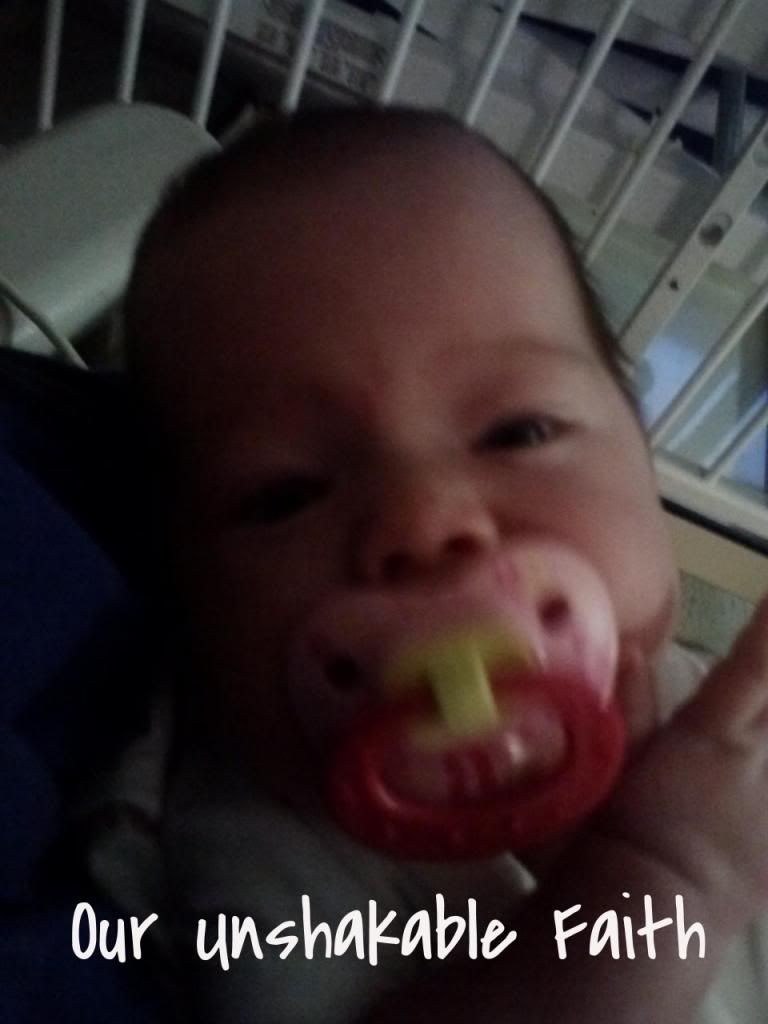 Well, then we had another doctor, Dr. T. He didn't like the potassium levels in Princess and suggested a
Well, then we had another doctor, Dr. T. He didn't like the potassium levels in Princess and suggested a femoral artery stick. I couldn't be in the room when they did that. I knew it was painful and I just couldn't be there to watch her go through that. There were about three more echos done, one by Dr. K while my mom was holding and feeding her. The poor kiddo had blood draws at least once to twice a day and heel sticks 8 times a day. Dr. K decided that Princess needed an MRI to double check for a congenital heart defect that he may not be seeing on all the echos. He was also going to make sure that there wasn't any narrowing of the arteries to the kidneys that could be causing the hypertension. We also met with a nephrologist and and an endocrinologist. The endocrinologist wanted a few labs, but said they were highly unlikely, but he just wanted to be sure. The nephrologist hadn't seen anything on the renal ultrasounds but was on board with the MRI to check for narrowing. So, things were looking like they were going to be taken care of. The only problem was that Dr. K said that if there was a CHD, he was going to have Princess transferred to Stanford because she would need immediate surgery. If there wasn't a CHD, we could likely go home as soon as the potassium was controlled. So that was looming over my head when Saturday came around. We were still waiting on the MRI, as there had been some accidents and other things that bumped Princess down the wait list.
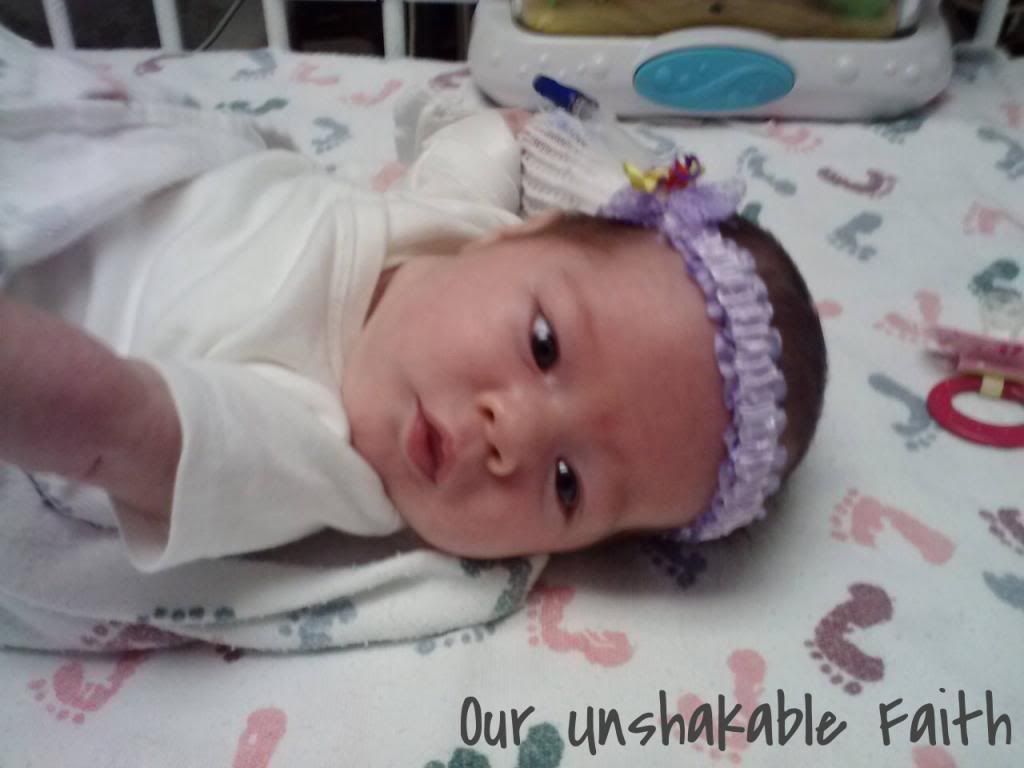 Princess was now 3 months old, so she had another monthly picture in the hospital. Princess's dad came to visit on Saturday since he was off of work during the day and Little Man was at his other grandparent's house. So after Dr. K stopped by, I went downstairs to call my mom and let her know what had happened. She had just gotten home. When I came back up to the room, it looked like a war zone! There were about four people hovering around Princess. I looked at her monitor, and her heart was beating and she was breathing. So I started asking what was going on. They were going to start an IV. I was okay with that because she would need it during the MRI because there was going to be contrast and she would have to stop all her feeds until afterwards. But there was also a respiratory therapist there for a breathing treatment. And then the internist came in and wanted to change Princess's formula. I asked about the breathing treatment. the RT said it was to blow off some potassium. I agreed to that. They also told me they were going to give her something to bring down the blood pressure immediately and something to bring down the potassium. Well, the medication for the potassium was okay, but they never did anything for the blood pressure as they wanted to give the medication she was on more time to work. As for the formula, well, I looked up the one they wanted to give her on my phone while I was helping keep Princess still for the IV. It said it contained milk protein. So I put a stop to that immediately the next time I saw the nurse, which was after IV therapy gave up trying to get an IV in and decided to call the NICU nurses down to get it. Somewhere between finding the formula and IV therapy not being able to get anything started, I lost it. When the NICU nurses came down, one of them remembered me. She told me they were going to get the IV started and at the same time they were going to hopefully get enough blood for the endocrinologist's tests so they wouldn't have to poke Princess again. I held it together long enough afterwards to call my mom and tell her what had transpired. She turned around and came back. That night, I let Princess's dad and grandpa keep watch over her while my mom and I went to get a hotel so I could maybe get some sleep. Sunday morning, I woke up at 5a and went outside. I broke down again. No one knew what was wrong. I was frustrated and scared. Were they ever going to find the answer?
Princess was now 3 months old, so she had another monthly picture in the hospital. Princess's dad came to visit on Saturday since he was off of work during the day and Little Man was at his other grandparent's house. So after Dr. K stopped by, I went downstairs to call my mom and let her know what had happened. She had just gotten home. When I came back up to the room, it looked like a war zone! There were about four people hovering around Princess. I looked at her monitor, and her heart was beating and she was breathing. So I started asking what was going on. They were going to start an IV. I was okay with that because she would need it during the MRI because there was going to be contrast and she would have to stop all her feeds until afterwards. But there was also a respiratory therapist there for a breathing treatment. And then the internist came in and wanted to change Princess's formula. I asked about the breathing treatment. the RT said it was to blow off some potassium. I agreed to that. They also told me they were going to give her something to bring down the blood pressure immediately and something to bring down the potassium. Well, the medication for the potassium was okay, but they never did anything for the blood pressure as they wanted to give the medication she was on more time to work. As for the formula, well, I looked up the one they wanted to give her on my phone while I was helping keep Princess still for the IV. It said it contained milk protein. So I put a stop to that immediately the next time I saw the nurse, which was after IV therapy gave up trying to get an IV in and decided to call the NICU nurses down to get it. Somewhere between finding the formula and IV therapy not being able to get anything started, I lost it. When the NICU nurses came down, one of them remembered me. She told me they were going to get the IV started and at the same time they were going to hopefully get enough blood for the endocrinologist's tests so they wouldn't have to poke Princess again. I held it together long enough afterwards to call my mom and tell her what had transpired. She turned around and came back. That night, I let Princess's dad and grandpa keep watch over her while my mom and I went to get a hotel so I could maybe get some sleep. Sunday morning, I woke up at 5a and went outside. I broke down again. No one knew what was wrong. I was frustrated and scared. Were they ever going to find the answer?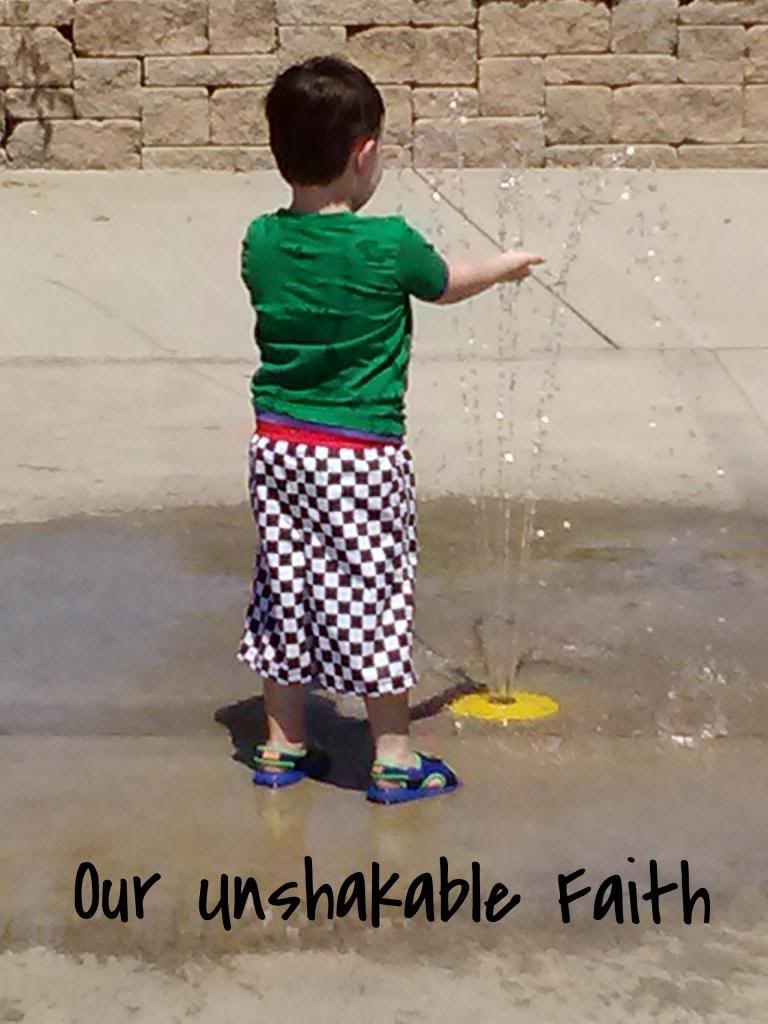
It was decided that I would go pick Little Man up from his grandparent's house, I would spend some time with him, pack my bag like we were going to be transferred, and bring Little Man to stay with my mom, just in case Princess was transferred. So I took Little Man to the sprayground at the park, since it was hot that day and let him play in the water. Afterwards, I brought him with me to the hospital, and handed him over to my mom. I then went back to keeping watch over Princess. They told me that she would have her MRI at 10 the next morning, so she would have to stop her feeds at 6. So I adjusted her schedule (we had already stopped the blood sugar tests) and was done feeding her before 6a. By 9:45a, she was miserable. She was starving and I couldn't do anything about it. So I pulled out my phone and started playing songs from my Cloud Player. When we got to Building 429's "We Won't Be Shaken," Princess finally settled down. That was when they came in to get her for her the MRI. So she was wheeled down to the MRI building, I held her as I talked to the anesthesiologist about how far under they were going to put her and how long it would take. She wasn't going to be that far under, but they would be monitoring her just in case she needed to be intubated. I was then led to a waiting area that ironically was in the entrance of the hospital. I sat there for a long time. I eventually paced. It was almost an hour and half before they came to get me and lead me back to recovery. She wasn't in recovery long and we were headed back to her room.
Later that afternoon, I was feeding her, wondering when we would at least get to disconnect the IV bag when I heard Dr. T talking with a couple of other docs. I think one of them was even the med student to the nephrologist. Then I heard the phone ring. I wasn't trying to listen, but her room in the PICU was right outside the nurses station and if I closed the door all the way, it was way too stuffy in there, so I had the door open about 4 inches. That's when I heard Dr. T say, "And the aorta is okay?" I knew then that he was talking to Dr. K. I tried to listen, but couldn't make out a lot. I kind of figured we were going to be going
home that night. The nurse came in a little while later and I asked about discontinuing the IV bag, as we had taken 2 feedings fine. She agreed and told me that there was a chance we might be going home. Well, that was at 3:30p that I overheard the doc. We didn't sign our discharge papers and leave until almost 8p. The biggest reason was because we were waiting on the pharmacy to get her medication together. It gave me time to talk to the nephrologist, who told me there was no narrowing of the vessels to the kidneys, so that wasn't the problem but she wanted to see us in a month. It also gave me time to talk to Child Life and get an update on Princess's Beads of Courage.
A month later, we saw the nephrologist. She didn't have any answers, but wanted another blood sample. When we got home, I got a message saying to pick up kayexalate at the pharmacy, as her potassium was high again. This freaked me out, but after calling Dr. K and weighing my options, we went ahead and did the kayexalate at home and reran the labs in the morning. Well, that turned into a nightmare because they messed up at the lab (the sample had hemolyzed and so they didn't report the potassium) and we had to go back a second time. So after that, we thought things were good. We then got a call a few days later to pick up ANOTHER medication. This one they had tried to call in, but it had to be compounded and so they had to find a compounding pharmacy. So Princess started on that medication as well as the other one. Towards the end of the month, we went off to Stanford. Then the following week, we met with another endocrinologist. That's where we got our diagnosis of PHA2! Princess had just turned 5 months old. That's rather quick when it comes to a diagnosis. On average, it can take 7 or more YEARS to get a diagnosis. In that time, you could see at least 8 doctors. We saw about 8, if you don't count the physicians on the floor of the PICU. If you count them, that's 10. So if you are in that process of diagnosis, know you are not alone, even though you may feel like it.
And if you get a diagnosis, please go check out the
and
Global Genes.
Both of these places have lists of rare diseases and ways to get involved with other families, foundations, and organizations.
NORD partnered with the European Rare Disease Organization (EURORDIS) back in 2009 to bring World Rare Disease Day to the US. It was started back in 2008. In 2013, over 70 countries participated in World Rare Disease Day. This year, World Rare Disease Day is TOMORROW, February 28. Through the Global Genes Project, we are encouraging everyone to wear blue jeans tomorrow. I made a bunch of jeans ribbons and handed them out to people we knew. If you got one, please wear it tomorrow.
I also made an profile picture for my Facebook page. If you are Facebook friends with me, feel free to steal it from me and use it as your own profile pic for the day.
I also had the opportunity to include Princess in a DVD that is at the US Capitol this very week! She was included with other PHA kids. I did something strange in the first few days after we got the diagnosis of PHA2. I plugged it into Facebook. I don't know if I thought I was plugging it into the search bar on my browser or what, but I found that there was actually a group of other Facebook users who had children (or were themselves) diagnosed with PHA. Most of them had PHA1 (salt wasting). There was only one other child with PHA2. When we began researching PHA2, we literally found the same information on about 6 different websites. There wasn't that much. There has been a few new discoveries around this disorder: a couple more genes that it's linked to, the fact that it can be a de novo mutation (a genetic mutation for the first time in a family member), testing for which gene is affected. All of these things are great news for us, though none of it changes the course of treatment: medication for life, a low potassium diet for life.
By definition a rare disease is one that affects less than 200,000 people. There are over 7000 rare diseases. They affect approximately 1 in 10 people in the US. So that's approximately 30 MILLION people with some type of rare disease. Over half of those people are children. And sadly, 30% of children diagnosed with a rare disease won't live to see their fifth birthday. Why? Because there is no treatment for 95% of rare diseases. Princess is lucky. Her disease has a treatment: medication. She'll be on it the rest of her life. But that is why we must continue to fight for rare diseases. Alone, we may be rare, but together, we are strong!

